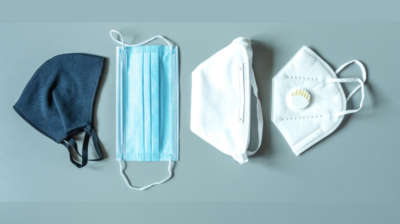
Searcy, AR (LP) — If worn properly, a surgical mask is meant to help block large-particle droplets, splashes, sprays, or splatter that may contain germs (viruses and bacteria), keeping it from reaching your mouth and nose. Surgical masks may also help reduce exposure of your saliva and respiratory secretions to others. Some people have suggested that carbon dioxide from exhaling gets trapped under the cloth and can make you sick. This isn’t true. Properly fitted masks offer adequate airflow while still covering your nose and mouth.
Taking a hot bath will not prevent you from catching COVID-19. Your normal body temperature remains around 36.5°C to 37°C, regardless of the temperature of your bath or shower. Actually, taking a hot bath with extremely hot water can be harmful, as it can burn you. Antibiotics do not work against viruses; they only work on bacterial infections. Antibiotics do not prevent or treat coronavirus disease (COVID-19), because COVID-19 is caused by a virus, not bacteria. Mrs.Stafford says, “Wearing cloth masks can help prevent people infected with the virus that causes COVID-19 from spreading the virus. Make sure your cloth mask: fits snugly but comfortably against the side of the face, completely covers the nose and mouth, is secured with ties or ear loops, includes multiple layers of fabric, allows for breathing without restriction, and can be laundered and machine dried without damage or change to shape. Cloth masks should NOT be worn by children less than 2 years old or anyone who has trouble breathing or is unconscious, incapacitated, or otherwise unable to remove the mask without assistance.” Drinking alcohol does not prevent or treat coronavirus infection and may impair immune function. While hand sanitizers containing 60-95% ethyl alcohol can help destroy the coronavirus on surfaces, drinking alcohol—including beverages with high percentages of alcohol—offers no protection from the virus. Per the WHO, heat at 56 degrees Celsius kills the SARS coronavirus at around 10,000 units per 15 minutes (quick reduction).
There is no evidence to suggest that food produced in the United States or imported from countries affected by COVID-19 can transmit COVID-19. Mrs.Stafford says, “SARS-CoV-2 infection is transmitted predominately by respiratory droplets generated when people cough, sneeze, sing, talk, or breathe. CDC recommends community use of masks, specifically non-valved multi-layer cloth masks, to prevent transmission of SARS-CoV-2. Masks are primarily intended to reduce the emission of virus-laden droplets (“source control”), which is especially relevant for asymptomatic or presymptomatic infected wearers who feel well and may be unaware of their infectiousness to others, and who are estimated to account for more than 50% of transmissions.1,2 Masks also help reduce inhalation of these droplets by the wearer (“filtration for personal protection”). The community benefit of masking for SARS-CoV-2 control is due to the combination of these effects; individual prevention benefit increases with increasing numbers of people using masks consistently and correctly.” The COVID-19 pandemic is a serious global health threat, and CDC is committed to stopping its spread. CDC has a long history of strengthening public health capacity throughout the world to contain outbreaks at their source and minimize their impact. Mrs.Stafford says, “Some people have suggested that carbon dioxide from exhaling gets trapped under the cloth and can make you sick. This isn’t true. Properly fitted masks offer adequate airflow while still covering your nose and mouth.” CDC is working closely with the World Health Organization (WHO) and other partners to assist countries to prepare for and respond to COVID-19. CDC routinely provides technical assistance to ministries of health and subnational and international partners to improve our collective response to infectious disease threats like COVID-19.
There is currently no evidence that the COVID-19 virus is transmitted through semen or vaginal fluids, but the virus has been detected in the semen of people who have or are recovering from the virus. Further research is needed to determine if the COVID-19 virus could be transmitted sexually. Your lungs might become inflamed, making it tough for you to breathe. This can lead to pneumonia, an infection of the tiny air sacs (called alveoli) inside your lungs where your blood exchanges oxygen and carbon dioxide. Coronaviruses are thought to be spread most often by respiratory droplets. Although the virus can survive for a short period on some surfaces, it is unlikely to be spread from domestic or international mail, products or packaging.
Pandemic: Event in which a disease spreads across several countries and affects a large number of people. Cloth masks should NOT be worn by children less than 2 years old or anyone who has trouble breathing or is unconscious, incapacitated, or otherwise unable to remove the mask without assistance. Learn more about how to wear, take off, and wash your cloth masks. The virus that causes COVID-19 is thought to spread mainly from person-to-person through respiratory droplets produced when an infected person coughs, sneezes, or talks. These droplets can land in the mouths or noses of people who are nearby or possibly be inhaled into the lungs. This type of spread is not a concern after death. The virus that causes COVID-19 is thought to spread mainly from person-to-person through respiratory droplets produced when an infected person coughs, sneezes, or talks.

To date there has been no information nor evidence to suggest that the new coronavirus could be transmitted by mosquitoes. The new coronavirus is a respiratory virus which spreads primarily through droplets generated when an infected person coughs or sneezes, or through droplets of saliva or discharge from the nose.
